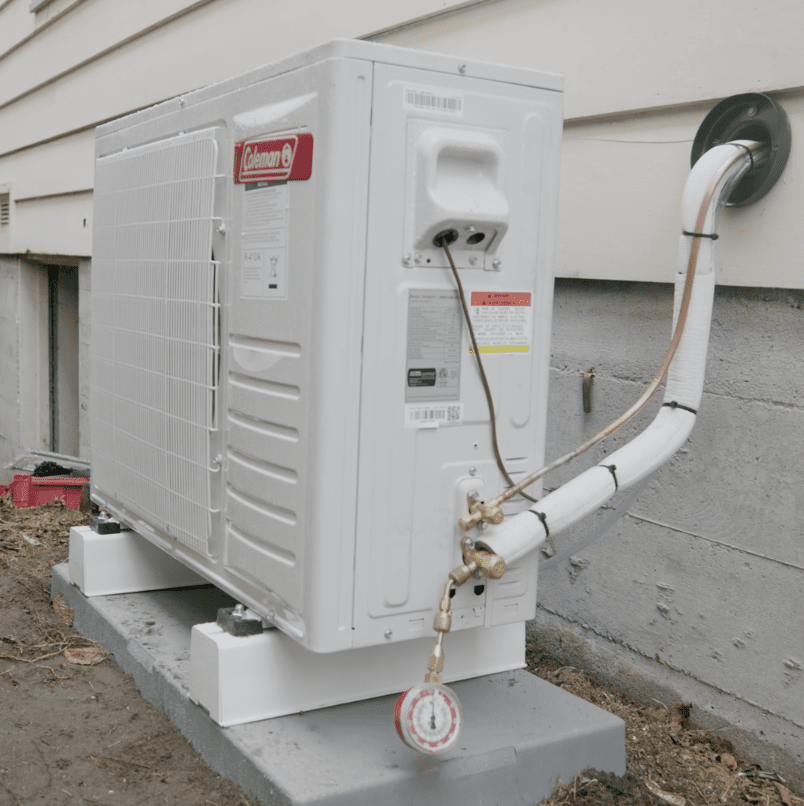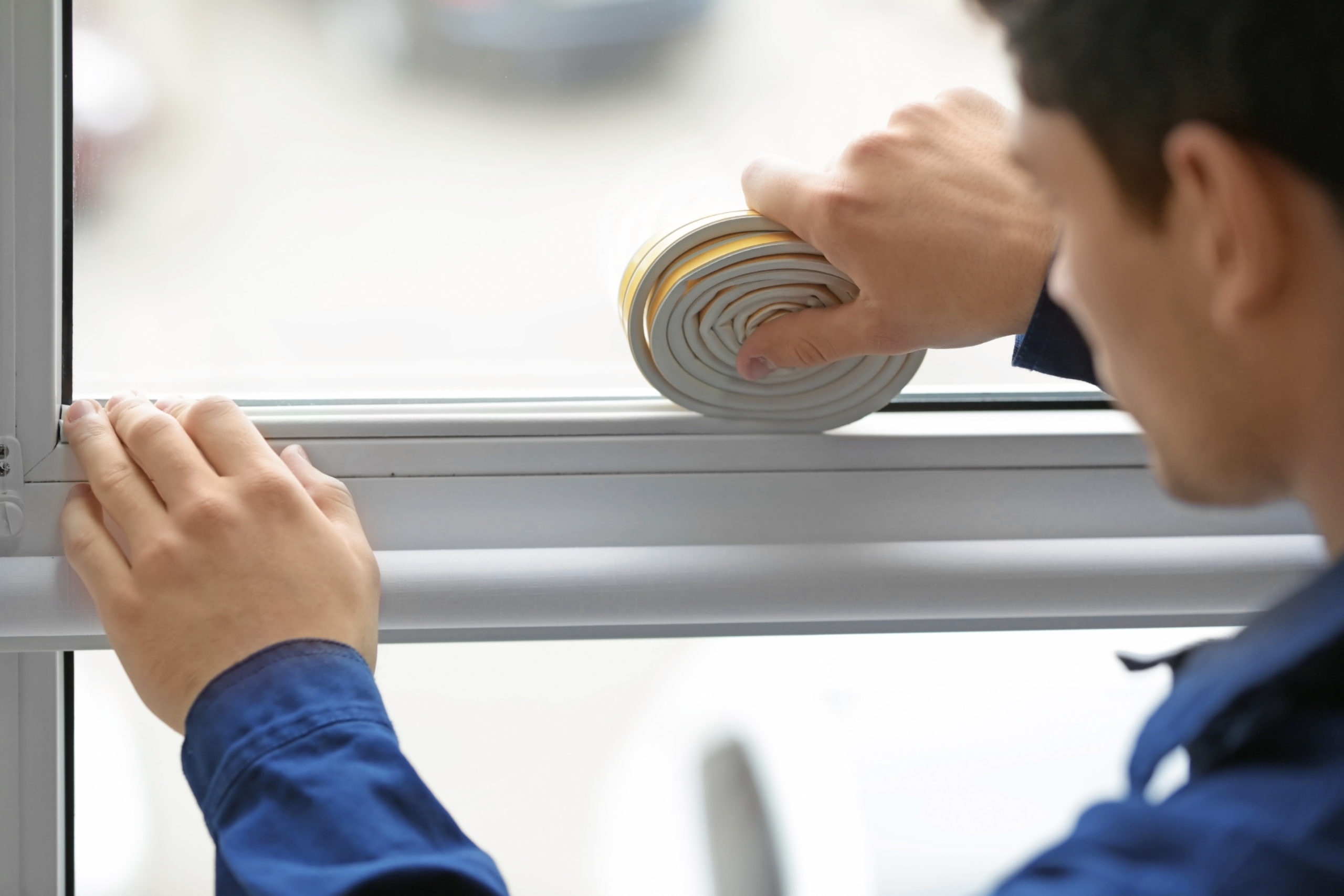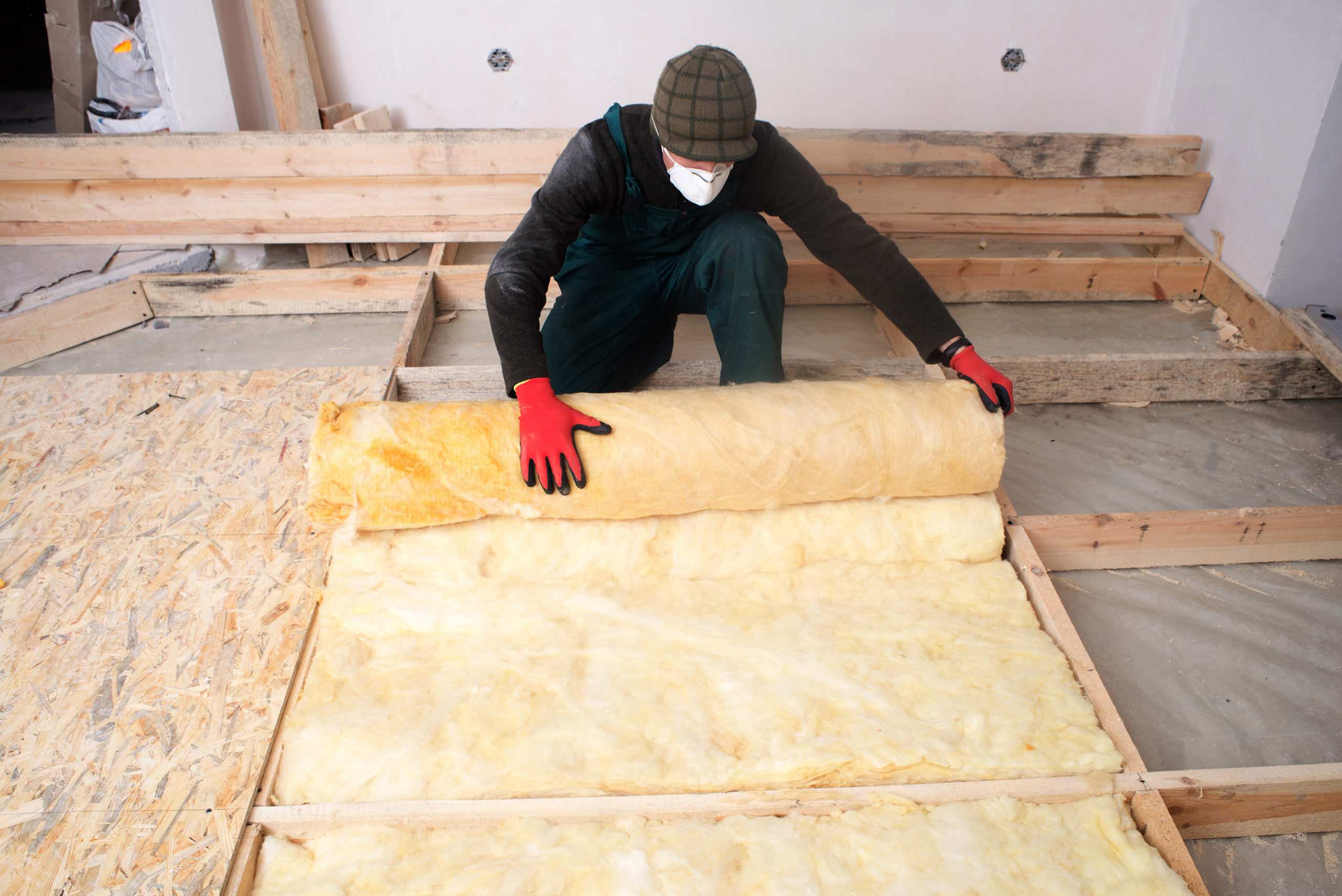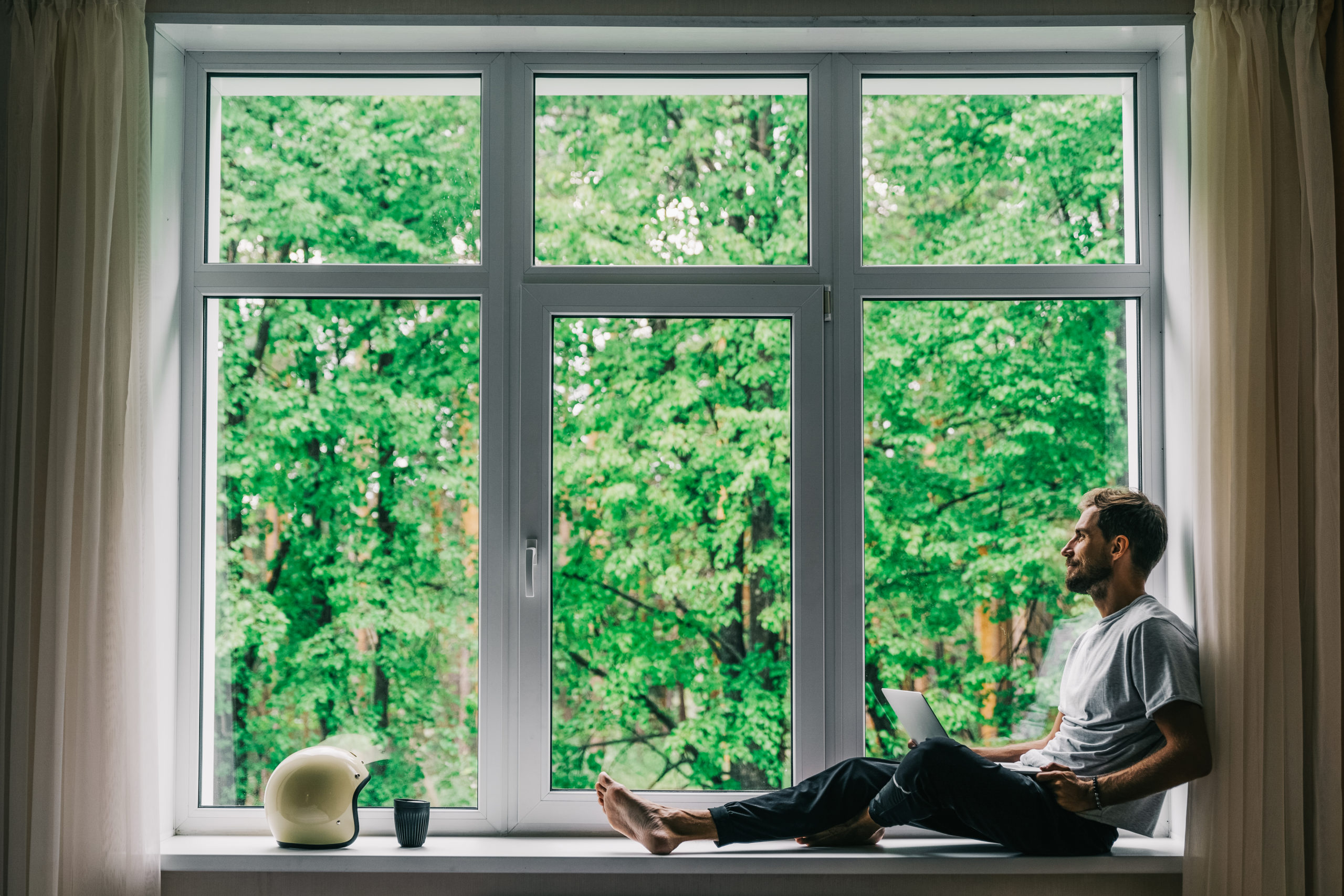Episode Transcript
| Jake Milan. I am a 40-year-old husband, father to two little boys, have a third one on the way, and really just worried about their future and trying to do everything that I can to make an A price on 20 years ago. I just started giving a shit, and that has kind of led me in this whole energy adventure, I started in biofuels and then I got into electric vehicles, first in aerodynamics and the heavy duty trucking sector, and then at Tesla, and then was over on the energy storage side of things, so this is a 1950s home. It was our next door neighbor plan is to bring my mother-in-law who has some mobility and health issues and have her move in after we rehab the home in… By rehab, I mean fully electrify it, make it on a lower cost home to maintain in terms of heating and cooling in the water inside the home, but also making it a healthier comfortable on the home was not in a great state. But really one of the things that we’re trying to learn more about is, what does it take to retrofit these homes, give them on a whole home energy makeover, instead of tearing them down and rebuilding a home, this is a great two-bedroom home, it’s got a big backyard, and the idea is to renovate it and create a working home that will work for my mother-in-law or maybe another couple… |
| Note from Jesse: Exterior shots, with Jake CO inviting the viewer to check out the house |
| And then lastly, we have the kitchen and this kitchen, so the countertops are pretty old, we’re going to replace that, we’re going to get a new fridge at, or this is an older fridge, we’re gonna get a more refrigerator, and then this is already an electric cook top so you might think, Well, let’s leave this, except this is one, it’s a bit older, but this is a common misconception when we talk about induction or electric cooking, is people think that they have to have a gas range in order to be a Top Chef, where actually most of the top chefs are now going to induction, and Induction is not this, this is the old electric resistance cook top, which I’m not a chef, but it’s a pretty terrible experience when you go to an induction, electric cook top not only… Does the top not get hot, which can be dangerous for small children, but you have complete control over the temperature of your food as well as more power sauces cook faster, water boils faster. You’re just able to do a lot more with less. And so that’s why the Top Shops, all the top brands, they’re all making really nice induction cooked up, so we’re just gonna pull this out, put a new induction one in, and the kitchen, the kitchen should be great to get to the furnace, how we actually heat and cool the house, we have a so crawl space, which is nice because it’s completely contained for rodents and other critters. |
| But if we come in here, we have the… |
| I guess it’s the carrier, whether maker 8000, so this is an extremely old… From the 70s, I believe. Natural gas furnace, these go into the ducks that ducks that go into your home and blow the hot area, and what we’re gonna do is replace this air handler unit with an electric air handler that will have cooled lines connected to a heat pump right outside this cross-face door, and then that electric air handler will take the hot air from the heat pump and put it through these insulated ducts, thus providing the same level of heating in the winter as this does, but at a fraction of the energy consumption. So the real benefit of swapping out this old gas furnace is that we will add an efficient new electric furnace to be a heat pump, and then we’ll also have cool air in the summer when it’s really, really hot. These climate change solutions, they do typically cost a little bit more on the upfront cost, but the calculations that most homeowners are not doing, unfortunately, is looking at what is the cost to install this right now, and then what is it gonna cost me to operate over the lifetime of the product. |
| And so what you wanna find is something that has the lowest life cycle cost over the total time that you’ll own it, so in order to really highlight the benefits of all the projects that we’re gonna do on the home, we need to establish a baseline before and a baseline after. So we’re bringing in Bob Green spun from simplicity Home Energy, and he is going to do a blower door test, he’s gonna check to see how tight the home is from an air leakage standpoint, so in the winter, that’s hot air leaving the house, and in the summer that’s hot air coming in the house, he’s also gonna look at some of the blown insulation that’s above the ceiling in the attic, and he’s also… My gas is going to recommend that we put some insulation under the floor, it’s a single-story house, so there’s just a little cross-space down below and put some insulation under the floor that’ll again, really improve the comfort of the home. Hi. Hi, Jake combo. How you doing? Nice to reach you, Bob, you to |
| Welcome. Thanks. |
| So you are going to be doing in energy efficiency analysis of the home, is that right? |
| Full audit, right? That’s the idea. Okay, fantastic. Come on in. Thanks, she’s off inside. Shoes are just fine. Okay, great. So tell me a little bit about the house and you’re hoping to find out today and what your plans are. Sure. |
| Yeah. So the house was built in 1942, is a single story. It has two bedrooms and one bathroom, there’s about 300 feet of unfinished garage space as well. There’s some insulation in the attic. We’re gonna look at that, we’ll look at the cross-space, but really the goal is to try and electrify the home, completely remove the natural gas out and really make the home more future-proved, more healthy to live in and more comfortable overall. Those are kind of the goals. |
| And do you have any kind of big remodeling plans where it’s more about efficiency. |
| Efficiency and electrification are really the drivers here, we’re gonna bring my mother-in-law and she’s gonna live in it and just trying to make it a really nice place for… I’m gonna show me around |
| A… |
| That’s great. |
| Let’s go for a tour. I am an independent expert that can analyze a house, so I do a lot of testing, actual scientific testing, a lot of investigation, going up in the attic, going down in the crawl space. I usually run a blower door test and that tells us how draft a houses, how much air leakage is in a house, and then I take all those data points, including things about ductwork, windows, doors, heating, hot water, appliances, lighting, and put that all into a computer model. To help generate some predictions about what kinds of savings to expect, so my plan today is to get up in the attic, figure out not just the insulation, but to see if there’s enough ventilation, ’cause an AIC has to breathe and then also think about air sealing, ’cause we don’t want he from the house to escape around junction boxes and other penetrations through the ceiling, I’m gonna use an infrared camera that’s gonna allow me to see through the walls, figure out what insulation is in the wall, so I’m gonna use a blower door that’s gonna measure our air leakage, how drafting the house is, and then not to forget about it, going down to the crawl space, thinking about the air leakage, the insulation, the hot water pipes, but then also make sure the critters aren’t getting in down there, looking at the duct work as well. |
| Alright, so down in a crawl space, there’s a lot of concerns, indoor air quality, insulation, trying to prevent that crawl space air from getting into the main living space, and of course, in this situation, the heat source and the duct work is down here as well. So we’ve got these floor Joyce here, and they are 2 x 10s, which is enough room to put in our 30 insulation, which is the correct amount. So that’s really good. See, this stuff work over here, this is regular rigid ducting and it’s got some duct tape on there, I prefer a semantic paste, which is a much better sealing and long-lasting, and then if it’s not insulated, these are getting hot and he’s just conducting through and you’re heating the spaceman down here. So right here, I don’t know if you can see this, but where this duct goes through the floor, there’s a gap in the penetration, so again, more air from the call space is sneaking in around here and pulling into the living space, if you keep the duct work then that definitely has to be air sealed around here with that can spray foam stuff. |
| Really easy to do. You gotta take a look at this. |
| I don’t wanna get over here. |
| Look at this, this is a spider haters nightmare, just see all those little balls, those are all spider execs. Do you see all those little bits, there’s like thousands and thousands of spiders growing in those egg sacs right now, so that’s why this scene where this long rim Joyce meets the sub-floor that has to be air sealed as well, where else to spiders are gonna be born and then they’re gonna crawl around this and find little gaps and then they’re gonna be living inside of your house, so again, prepping the crawl space air sealing to prevent that crawl space air and critters from getting in there is super, super important. Before you do any of the insulation, and then of course, any of the plumbing, this stuff here, this is carrying hot water, these should be insulated so that it’s not shedding heat as it’s running through here, if we’re just talking about dollars saved with this furnace, doing just the insulating and air sealing could probably save about 150 a year. That’s just based on thousands of computer models that I’ve done for a house this size, if you go to a more efficient heat pump, the total cost of heating your house gets smaller… |
| Just in terms of the health of the people who live here, the durability of the house. It’s really a no-brainer. It’s just something you gotta do. Yeah, I’m curious what choices are gonna be made… Well, we’ll see here. |
| Bob. Okay. No, good at it. Okay, that’s not good. |
| That is… Yeah, so I don’t feel faith running a blower door test today because of the presence of this type of insulation here, this insulation is called reticulate, it often contains Express, so we can bag it or accepted bag it, you can take it to have it tested. And I can kinda see what the current insulation will is now, but you don’t wanna have workers or anybody else, Taranto here, and if we do a blower door test, it’s gonna pull those fibers through all the light fixtures or anything that… That not say. |
| Got it. |
| Okay, so I’ll call in, I’ll take a little closer look, triggered out how far down this goal, but it’s kind of a duplicate… |
| I’m glad we found that out here sooner rather than later. |
| Like every house, you never really know what you would expect, and I think we got a few surprises today, I think the biggest surprise was finding vermiculite in the attic, it really prevented us from doing a blower door test to really measure the air leakage of the house, things can go forward until that gets tested and abated, if you’re really going for zero, it’s gonna cost a little bit more, but it’s definitely well worth it, and it’s gonna improve the indoor air quality, which is a huge concern. And the comfort. Yeah, so to set up this blower door, we’re going to make sure all of the doors and windows to outside are closed and locked, and so we wanna create one continuous air space on the inside of the house, like one bubble will a thumb… Is that about 35% of the air volume of the house, it’s replaced with fresh air through natural air leaks every hour, 35% seems like a pretty large amount, but reality is, is that we breathe and we sweat, and we cook and we have pets, and we take showers and all that stuff. So we need to have all new fresh air in the house, like once every three hours, we are back and we’ve got Bob Green spun from simplicity Home Energy here to do the blower door test, where in essence, we’re gonna find out how leaky this house is or how tight the house is in terms of air flow, can you tell us a little bit about what this blower door is and how it works? Yeah, so we are going to be able to measure the air exchange rate, how much air leakage there is, or how drafting the house is using this device measuring different air pressures inside outside and moving through this giant fan, and then once we know that, using math, we can calculate that air exchange rate even under normal conditions, so we just want the house to be tight, we wanna get in that goal I log zone, not too tight, so that we would be getting condensation, mold growth, not enough oxygen, smells not dissipating, but not too much air leakage, where we’re losing heat or in the summer letting warm air in or just feeling drafts, so we’re gonna not only be able to measure our air leakage, but then using an infrared camera, we’re actually going to see where the air leaks are occurring. |
|
Note from Jesse: Do we have any footage of the work that was done in the attic? We didn’t shoot any of it. Jake VO explaining that after the work was done on the attic, Bob returned to do the blower door test. |
| Oh, okay, and then that will help the air sealing people, whether it’s you or you have a weatherization company come in to do it, any homeowner can grab a tube of call or can of spray foam and air seal a house pretty effectively, or add some weather-stripping to doors. |
| So we might even be able to see air coming up from the crawl space… Through the floor. |
| Yeah, absolutely. Anything that penetrates through the floor, like these duct boots under walls, we’re gonna see all stuff. Okay, great, great. So we’re ready to get this thing started. |
| I think so. Yeah, let’s turn this gigantic fan on… That is a serious fan |
| Sites, I’ll measure air pressure at a number of different pressures and then graph it all out refilling right here. Oh yeah, yeah, so we go, that’s our total air leakage amount for the whole house. |
| That’s gonna tell us… |
| Yeah, but then we’ll turn it back on and use the infra camera to pinpoint the exact location of our leakage based on what we’ve calculated from the blower door, if we were targeting 35% is the optimal exchange rate that Goldilocks zone… We’re not at 35%, we’re at 92%. Wow, so that’s two and a half times more air leakage than is desirable, so air ceiling is going to save a lot of money, it means that the heating system is not going to have to work as hard or as often… Your indoor air quality is going to all be improved, and so let’s turn this pan back on, get the infrared camera out and then we’ll pin point where some of this are… Leakage is occurring. |
| I think that sounds great. Yeah. |
| Let’s do it. Alright, so here’s the first fun thing, come and stand next to me, Janice. |
| We’re going at the window. |
| Right, we’re shooting at this window right now, and you can see Ryan, our cameraman behind us, right. So yeah, this is our heat, so when we start to apply that over to these areas, these colder sections come out blue, we look at the front door here, and we can see the air leakage around the edges, so that… I see it at the top. I see it underneath |
| This feels like a fan that’s turned on… Right. |
| Exactly. Yeah, that’s amazing. Anytime you cut through the floor, there’s inevitably going to be a gap, do you see the gap between the boot and the floor… Cut out that’s outside. Put your hand down by that gap… Oh |
| Yeah, I can… |
| Well, it’s not coming out of here, it’s coming out on the side of it, so that tells us the duct work itself is pretty tight, but the problem is the gap around boos incredible. Simply before insulating underneath of our feet to use a can of spray foam to air seal around that is gonna be a five-minute task and it’s gonna do so much because you don’t wanna breathe that cross-Maserati is incredibly… Yeah, just look at this infrared here, just see all this… All this streaking around here, that’s that cold crawl space air getting pulled into the house. That’s incredible. Well, great, Bob, thank you so much for coming out. |
| What are the three things that any home owner can use to reduce their air leakage? |
| Well, the first thing to remember is that air leakage isn’t always the enemy, we wanna find that Goldilocks on that balance point between air leakage and having enough fresh air… Fresh air is good. Fresh air is good. We don’t wanna live inside of the jar, so that’s the first thing to remember if you wanna… Most homes built before 2000 are gonna have more air leakage than necessary, and air ceiling is something that anyone can do, caulking weather stripping, door sweeps and cans of spray Fallbrook. Gotcha, okay. There’s lots of tutorials for them, so you can learn how to do it yourself, but when in down, bring it a weatherization contractor and whatever you do, if you’re planning on getting a crawl space insulated or an attic insulated, take the extra step and make sure they air seal around all the lights and anything else that penetrates through the ceiling and floor before putting in that insulation. |
| Got it. Okay, well, thank you so much for coming out as a… We look forward to seeing you again. Great. |
Learn More
Coming Soon
Next Episode
Gas Furnace Replacement / Heat Pump Installation
Subscribe to Going For Zero for episode release updates:







